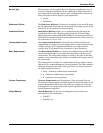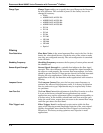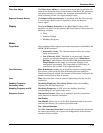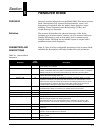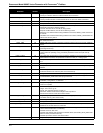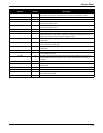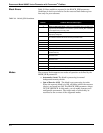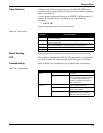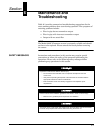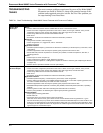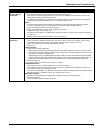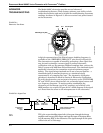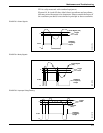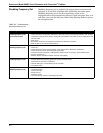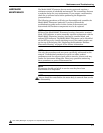
5-5
Resource Block
Alarm Detection A block alarm will be generated whenever the BLOCK_ERR has an
error bit set. The types of block error for the resource block are defined
above (see Table 5-2).
A write alarm is generated whenever the WRITE_LOCK parameter is
cleared. The priority of the write alarm is set in the following
parameter:
• WRITE_PRI
Alarms are grouped into five levels of priority
:
TABLE 5-3. Alarm Priority.
Status Handling There are no status parameters associated with the resource block.
VCR The number of configurable VCRs is 8. The parameter is not contained
or viewable within the resource block, but it does apply to all blocks.
Troubleshooting Refer to Table 5-4 to troubleshoot any problems that you encounter.
TABLE 5-4. Troubleshooting.
Priority
Number
Priority Description
0 The priority of an alarm condition changes to 0 after the condition that caused
the alarm is corrected.
1 An alarm condition with a priority of 1 is recognized by the system, but is not
reported to the operator.
2 An alarm condition with a priority of 2 is reported to the operator, but does not
require operator attention (such as diagnostics and system alerts).
3–7 Alarm conditions of priority 3 to 7 are advisory alarms of increasing priority.
8–15 Alarm conditions of priority 8 to 15 are critical alarms of increasing priority.
Symptom Possible Causes Corrective Action
Mode will not leave
OOS.
Target mode not set Set target mode to something other
than OOS.
Memory failure BLOCK_ERR will show the lost NV
Data or Lost Static Data bit set. Restart
the device by setting RESTART to
processor. If the block error does not
clear, call the factory.
Block alarms will
not work.
Features FEATURES_SEL does not have Alerts
enabled. Enable the Alerts bit.
Notification LIM_NOTIFY is not high enough. Set
equal to MAX_NOTIFY.
Status options STATUS_OPTS has Propagate Fault
Forward bit set, which should be
cleared to cause an alarm to occur.



